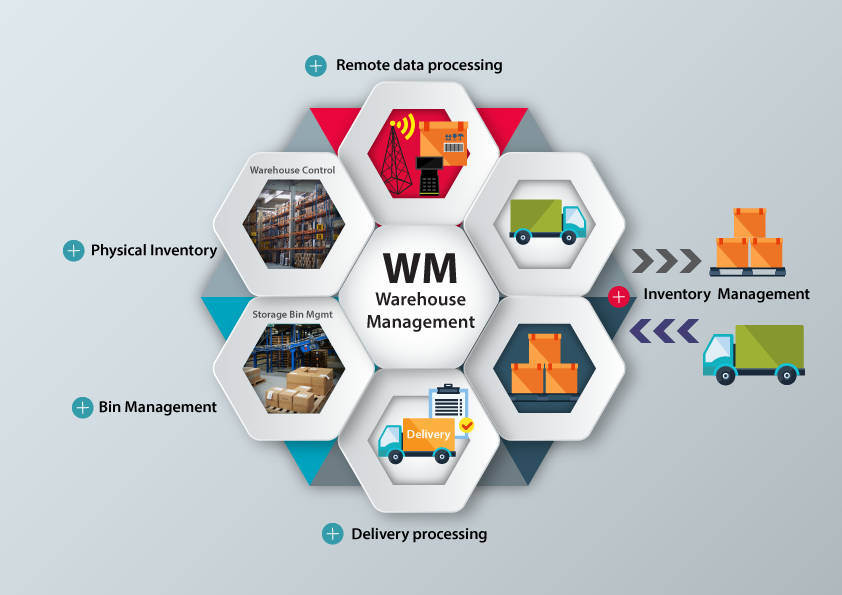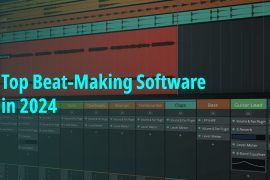A Package Registry Software stores packages. Packages are simply reusable software components. Developers use packages to accelerate their development time. Here is the metadata associated with the packages. A package registry software generally has the subsequent features:
- A method of uploading packages.
- A set of APIs for the client to make routines to interact with them. This includes searching, installing, checking for upgrades, etc.
- An admin dashboard or command-line utility to manage user access and look at all the packages that are present.
Most languages and frameworks provide their public package registry software, from which users can download and use the packages. Since such package registry software is maintained and verified by open-source communities or consortiums, there’s a minimal level of security related to them, but this could not be enough for a corporation that places the utmost importance on security.
Table of Contents
Key Features in Package Registry Software

Following are the main features that users should target in a Package registry software:
- Package Registry Software employed in modern software development is tens of megabytes and wants quite a little bit of space for storing to manage. Model files and dictionary files included in packages, particularly in machine learning and ETL applications, may gobble up gigabytes of data at times.
- Another important aspect of utilizing package registry software is the ability to make modifications when the packages’ creator updates them. The package author should be prepared to update the artifact. It is not possible to compel developers who are currently using the original package registry software to transition to the new package. All developers who use the first package must be prepared to maintain and rebuild their apps if necessary. As a result, most packages are versioned, and tracking the version becomes another crucial facilitator job.
- Package Registry software isn’t always created in-house. Open-source software is often obtained from outside sources by developers. For engineering firms, this poses an incalculable security risk. Recent assaults on businesses that employ a mix of personal and public packages have highlighted the security risks that a company might face if it isn’t careful with packages.
- In the end, package registry software is useless if a developer does not need to keep track of them. They must then install it using client software that is present in their build or development instance after it has been discovered. To summarise, a facilitator tool is required to store packages and coordinate the search and installation operations.
5 best Package Registry software that must be explored in 2022?
Following are the 5 most popular package registry software available in the market that you must explore in 2022.
Github Package Registry
GitHub package registry offers the hosting service with a graphical interface. It is considered the broadest coding network in the world. When a piece of code or a project is published on GitHub, it gets a lot of attention. Programmers may discover source codes in a variety of languages and make and monitor modifications using Git, a command-line interface.
GitHub allows team members to collaborate on projects from anywhere while at the same time facilitating collaboration. So that projects stay transparent and on schedule, project managers and developers can collaborate, track, and update their work in one spot. Users may fine-tune the process as the team grows, update tools as technology advances, and come up with new methods to operate more efficiently.
Key features
- Easy Project Management
GitHub is a SaaS platform for developers and project managers to collaborate, update, and track their work to keep the data and overall project transparent and relevant.
- Increased safety with Packages
Packages can be released privately, within the team, or publicly to the open-source community. Users can download the package from GitHub and use or reuse it.
- Effective team management
GitHub keeps all the members in a team organized and on the same page. Issue and Pull Request Locking, for example, let the team focus on the code.
- Improved code writing
Organizations can use pull requests to examine, develop, and submit new code. Before modifying the source code, team members can use them to discuss any implementations and recommendations.
- Increased Code Safety
GitHub employs specialized tools to identify and analyze code flaws that other tools are prone to overlook. From start to finish, development teams from all over the world collaborate to secure the software supply chain.
Pros
- Github has been around for a long time and is the sole leader of source control management.
Cons
- While this isn’t intended to be used as a project management tool, having quick access to and knowledge of dashboards and automated reporting would be beneficial.
Pricing
GitHub has three payment options, ranging from $0 to $21. There is also a free GitHub trial available. There are various price editions and features are available that suit for user’s budget and requirements.
JFrog Artifactory
JFrog Artifactory is a universal DevOps solution that boosts productivity throughout the user’s development ecosystem by automating and managing binaries and artifacts from start to finish during the application delivery process. It gives the option to choose from 25+ software build packages, all major CI/CD systems, and existing DevOps tools. It supports containers, Docker, Helm Charts, and is the user’s Kubernetes and Docker registry.
Key features
- Hybrid and Multi-Cloud Environments
Artifactory may be hosted on user’s infrastructure, in the cloud, or as a SaaS solution, giving users the most freedom and choice.
- Universal Binary Repository Manager
Alpine, Maven, Gradle, Docker, Cargo, Conda, Conan, Debian, Go, Helm, Vagrant, YUM, P2, Ivy, NuGet, PHP, NPM, RubyGems, PyPI, Bower, CocoaPods, GitLFS, Opkg, SBT, and more are all supported by Artifactory.
- Extensive Metadata
For both artifacts and folders, Artifactory provides comprehensive information for all major package types. These include metadata provided by the package itself, user-added metadata such as searchable attributes, and metadata generated automatically by tools such as build information and more.
- Artifactory as Your Kubernetes Registry
Artifactory acts as a global repository manager for all the user’s CI/CD needs, regardless of where they are operating in the user’s business, allowing users to deploy containerized microservices to the Kubernetes cluster. Once the user has checked in their App package, they may propagate it, build it, test it, promote it, and eventually deploy it to Kubernetes.
- Massively Scalable
Supports a range of enterprise-scale storage capabilities, including S3 Object Storage, Google Cloud Storage, Azure Blob Storage, and Filestore Sharding, for unsurpassed scalability, disaster recovery, and stability and dependability.
In addition to the above-mentioned features, other functionalities of JFrog Artifactory include:
- Replication
- High availability
- Advanced CI Server integration with Build Tools
- Custom API-Driven Automation
- Advanced Search with Artifactory Query Language
- Artifactory Cloud with CDN Distribution
Pros
- Build artifacts and packages are stored and managed.
- It also serves as a container registry.
- Manages local and remote repositories with ease, as well as live replication.
Cons
- JFrog Artifactory X-Ray is still in its infancy.
- Backup and restore capabilities should be built-in.
- The responsiveness of customer service has to be enhanced. It takes many days to receive an answer.
- The OSS version offers extremely basic functionality, whereas the enterprise version is more expensive.
Pricing
Artifactory’s monthly price starts at $98.00 per feature. A free version is available. As needed, pricing for increased capacity and features is available. As a starting point, higher-value plans provide greater enterprise-level features and capacity. A free trial is also available at Artifactory.
Ninite
It’s a public platform where third-party developers may share their apps. Developers that use this method to distribute their programs may make use of the built-in installer, update feature, security, and, ultimately, payment processing.
Key features
- It’s easy to use and gets right to work as soon as the user downloads it.
- There will be no more garbage or adware added. Ninite ensures this by automatically detecting whether the user’s system is 64-bit or 32-bit and installing the appropriate apps for each bit version.
- Ninite installs the software in the language of the user’s computer. As a result, users do not have to be concerned about it.
- Ninite will always download the most recent or stable version of the program.
- The requests for a reboot at the end of the installation are also handled.
- The fact that applications may be downloaded from their official website indicates that they are genuine.
Pros
- Ninite compiles and installs all of the most popular third-party apps in one place.
- There’s no need to jump from one URL to the next or have a thumb drive full of updated executables.
- On modern computers, installations make users’ jobs easier.
Cons
- There are a few outdated bits of software on there that are no longer supported by their creators. They are inefficient and should be replaced with more appropriate software.
Pricing
Ninite’s price is relatively affordable, starting at $20 per month for 100 machines and $185 per month for 1,000 units or more (beyond that, custom, i.e., arm-wrestling, pricing is available).
NuGet
NuGet is the Microsoft-supported system for exchanging code for.NET (including.NET Core), and it defines how packages for.NET are generated, hosted, and consumed, as well as providing tools for each of those functions.
Key features
- Package Access Control
It can control which individuals, teams, or locations have access to specific packages.
- Package Tracking
It allows users to keep track of package downloads by number, user, location, or other demographics.
- Automation
It enables package deployment to be automated.
- Package Management
It assists with the creation, maintenance, and removal of available packages.
- Integration
It may be used in conjunction with other software development and maintenance programs.
In addition to the above-mentioned features, other functionalities of ProGet include:
- Code analysis
- Rollback
- Vulnerability checks
Pros
- It’s simple to use. It may be used in conjunction with an IDE or as a standalone command-line program.
- The bulk of development and DevOps toolchains are integrated.
- It allows users to easily and seamlessly integrate third-party libraries and tools into their apps without requiring a lot of technical knowledge.
Cons
- The final product’s quality is determined by the package creator.
- Circular chain dependencies can sometimes be generated, causing work to be moved around inside the software.
- It takes some time to become used to command-line tools, and the package viewer software is short in capabilities.
Pricing
NuGet pricing information is provided by the software vendor or gleaned from publicly available pricing materials. The seller must undergo final cost negotiations to purchase NuGet.
ProGet
ProGet assists users in packaging programs and components so that their software may be produced once and distributed reliably across environments. This ensures that everything that gets into production is exactly what was developed and tested.
Key features
- Applications & Components
To consistently deploy user programs and components, utilize Universal Packages or Docker images and Helm (Kubernetes) Charts for containerized software.
- Developer Libraries
Whether the user is using C#/.NET (NuGet), Python (PyPI or Conda), JavaScript/NodeJS (npm), Ruby (Gems), or Java, share pre-built and pre-tested code amongst development teams (Maven).
- System Software & Configuration
Third-party Windows software (Chocolatey), PowerShell packages / DSC resources, and Linux packages (RPM/Yum and Debian/apt) may all be managed.
- Organize and Curate Internal & External Packages
To arrange and distribute user’s items to different groups or even external clients, create as many feeds as they like.
- ProGet Enterprise
To load balance traffic from multiple teams and create servers across the world, add as many web server nodes as users require.
In addition to the above-mentioned features, other functionalities of ProGet include:
- Deploy user’s packages & track their Use
- Scan and validate open-source packages
- Replicate feeds
- High availability
Pros
- High availability, load balancing, and multi-site replication are all included in ProGet’s package.
- ProGet can consolidate a user’s organization’s software applications and components, giving developers and servers uniform access no matter where they are in the network.
Cons
- This utility requires new functionality in a short amount of time, as well as problem repairs.
- The latest versions do not include the planned bug fixes and improvements.
Pricing
ProGet pricing information is provided by the program vendor or gleaned from publicly available pricing materials. The seller must perform final cost negotiations to buy ProGet.
Conclusion
Package registry software connects people in groups to solve issues, advance ideas, and learn from one another. Users may host their packages and code in one location using package registry software. Software packages can be hosted privately or openly, and users can utilize them as dependencies in their applications.
In this article, we discussed the 5 most popular package registry software that will be available in the market in 2022. If you have any further queries or are looking for more information regarding any package registry software, kindly connect with us at SaaSworthy.






